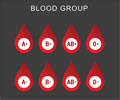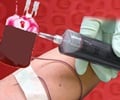A report in the October 12 issue of Archives of Internal Medicine, one of the JAMA/Archives journals has revealed that an outbreak of bloodstream infections appears to have been caused by the contamination of pre-filled heparin and saline syringes made by a single company .
The subsequent investigation revealed that the company was not in compliance with safety regulations and identified challenges and areas for improvement in medication monitoring systems.Between October 2007 and February 2008, the Centers for Disease Control and Prevention (CDC) received reports of clusters of bloodstream infections caused by the bacteria Serratia marcescens at health care facilities in several states, according to background information in the article. Based on initial information from facilities in Texas and Illinois, the investigation into the cause of the outbreak focused on syringes pre-filled with the blood thinner heparin and saline from one company (company X).
David Blossom, M.D., of the Centers for Disease Control and Prevention, Atlanta, and colleagues report that the company was able to provide records for other facilities that had received the same syringes. The CDC contacted these recipients and posted requests on e-mail distribution lists to solicit additional infection case reports. Culture specimens were taken from unopened pre-filled heparin and saline syringes at facilities reporting infections as well as at company X.
A total of 162 S. marcescens bloodstream infections in nine states were reported among patients at facilities using syringes from the same company. Cultures of unopened pre-filled heparin and saline syringes manufactured by this company grew S. marcescens. Of 83 blood samples that contained S. marcescens submitted to the CDC from seven states, 70 (84 percent) contained bacteria genetically related to that grown from the pre-filled syringes.
"To ensure the sterility of manufactured medical products, companies must adhere to the U.S. Food and Drug Administration's Good Manufacturing Practices [GMPs], a comprehensive body of regulations that govern all aspects of production," the authors write. "An onsite inspection of the manufacturer by the FDA revealed poor compliance with the FDA's GMPs and quality system regulations. Within days of this inspection, company X discontinued production of all medical products." The company also issued a voluntary national recall of the pre-filled syringes.
"Close collaboration among federal agencies, public health authorities and clinicians was critical to the identification of the cause of this outbreak," the authors conclude. "In the course of the investigation, we also identified several challenges to medical product tracking that should be addressed promptly so that disease outbreaks caused by exposure to contaminated medications can be dealt with more efficiently in the future." For example, a large number of distributors acted as intermediaries between the manufacturer and the health care facilities that used the products, and none of the syringes bore company X's name on the label, but rather had the names of subsidiaries or different companies.
Advertisement
Editor's Note: Please see the article for additional information, including other authors, author contributions and affiliations, financial disclosures, funding and support, etc.
Advertisement
Source-Eurekalert
RAS












